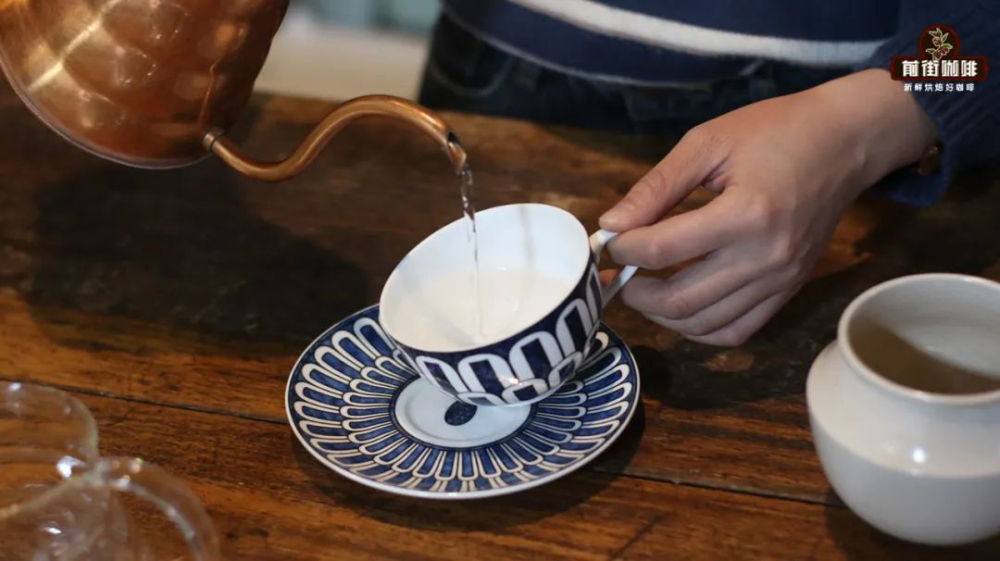Is it necessary to warm the cup to make coffee? What's the use of preheating a cup of coffee?
Warming the cup is a subtle step in the whole process of making coffee, which some people think is very important and affects the flavor of the whole cup of coffee, while others think that it is optional and unnecessary. As a matter of fact, is cup warming optional or essential for coffee?
For the espresso series, the warm cup is very important. Because one feature of common espresso, hot lattes and cappuccinos is that they taste good when they are hot, taste less good when they are warm, and taste bad when they are cold. So for espresso, heat preservation is very important. Qianjie uses a shunt handle to extract two espressos, one in a warm cup and the other in a room temperature cup. Two minutes later, there was nothing different on the surface of the two cups of coffee, but when tasting, the warm cup was still hot and had a good flavor and taste; the normal cup of coffee had become warm, sour and slightly lacking in taste. The coffee cups used to hold hot lattes and cappuccinos are generally ceramic cups with thick walls, because this kind of hot milk coffee needs to be kept warm. The milk used to make milk coffee is usually controlled at 55-65 degrees Celsius (too high will denature the protein); then the temperature for making milk coffee is about 60 degrees. If the ceramic cup does not have a warm cup, the ceramic cup itself will absorb some of the calories of the coffee, resulting in a lower temperature of the milk coffee, making the lactose sweetness of the milk coffee less obvious. And the faster cooling also accelerates the delamination and disintegration of milk bubbles, affecting the taste. Italians attach great importance to warming cups. Basically, semi-automatic coffee machines made in Italy have a warm cup zone, that is, they stack the coffee cup on top of the coffee machine and use the heat emitted by the boiler to warm the cup. For hand-brewed coffee, warming the cup is not necessary, more often depends on the situation. Hand-brewed coffee is different from Italian coffee (milk coffee). The first point is that hand-brewed coffee can taste its flavor from its high, medium and low temperature. the second point is that the temperature of hand-brewed coffee is more than 70 degrees, which belongs to a relatively high temperature. In the past, when making coffee in the street, for example, the sharing pot in front of the street would be preheated, so the coffee would be hot. If the guest is sitting at the bar, the cup will not be warm when the small cup is used in the front street, so that the hot coffee will be poured into the cup just right at the entrance temperature, so that the guest will not be scalded.

If you use a bone porcelain cup, Qianjie will use a hot water cup in advance, the opening of the main bone porcelain cup is larger, the heat dissipation will be faster, and the heat will be lost when all the coffee is poured into the cup, so it is mainly heat preservation.

Some friends have also shared its experience. In the past, he was very superstitious about the warm cup. He often poured the freshly brewed coffee into the cup and his mouth was so hot that he had to wait a minute or two before he could drink the first sip. Later, he let it go, and now poured the freshly brewed coffee directly into the normal temperature cup, so that he could take a sip immediately without losing the temperature. Therefore, warming the cup is not necessary for hand-brewed coffee, but should be considered according to the actual situation and needs.
Important Notice :
前街咖啡 FrontStreet Coffee has moved to new addredd:
FrontStreet Coffee Address: 315,Donghua East Road,GuangZhou
Tel:020 38364473
- Prev

Coffee creativity to reproduce a strange new combination! Guangdong rice noodle roll + espresso, Gao Qiqiang was silent!
Professional coffee knowledge exchange more coffee bean information please follow the coffee workshop (Wechat official account cafe_style) more boutique coffee beans please add private Wechat Qianjie coffee, WeChat: qjcoffeex outrageous! Outrageous! It's a big story! I can't believe my eyes. What did I see?
- Next

Coffee shop management must see! Eight main reasons for the failure of a coffee shop
Professional coffee knowledge exchange more coffee bean information please follow the coffee workshop (Wechat official account cafe_style) more boutique coffee beans please add private Wechat Qianjie coffee, WeChat: qjcoffeex the domestic coffee atmosphere is becoming more and more hot in recent years, many people who like coffee want to open it.
Related
- A complete list of coffee bean names and their meanings! What is Yejia Shefi coffee? Where is Mantelin coffee?
- What grade does Arida Manor Kaduai coffee beans belong to? What treatment is Arida ASD slow anaerobic sun exposure?
- The milk tea cup becomes smaller?! Overlord Tea Girl launches a new "Return to Yunnan" series
- Accused of selling counterfeit and high-priced coffee beans! Well-known boutique coffee brand "Oukelao" bowed and apologized!
- How to make espresso dumplings? Can I eat coffee and glutinous rice balls together?
- Save the unformed and stagnant powder cakes in one second! What is the problem with stagnant water in the powder bowl of the espresso machine?
- What does hand-brewed coffee stop mean? Why is it not recommended to make coffee by hand?
- Is it normal to smell like coffee? Why does coffee smell like alcohol? What's wrong with the strong smell of cold extract ice dripping ice brewed coffee?
- How to solve the problem that hand-brewed coffee extraction takes too long? Why is the water flowing so slowly when making coffee?
- The main points of making Australian white coffee, the proportion details, how does Australian white properly foam and blend the flowers?

